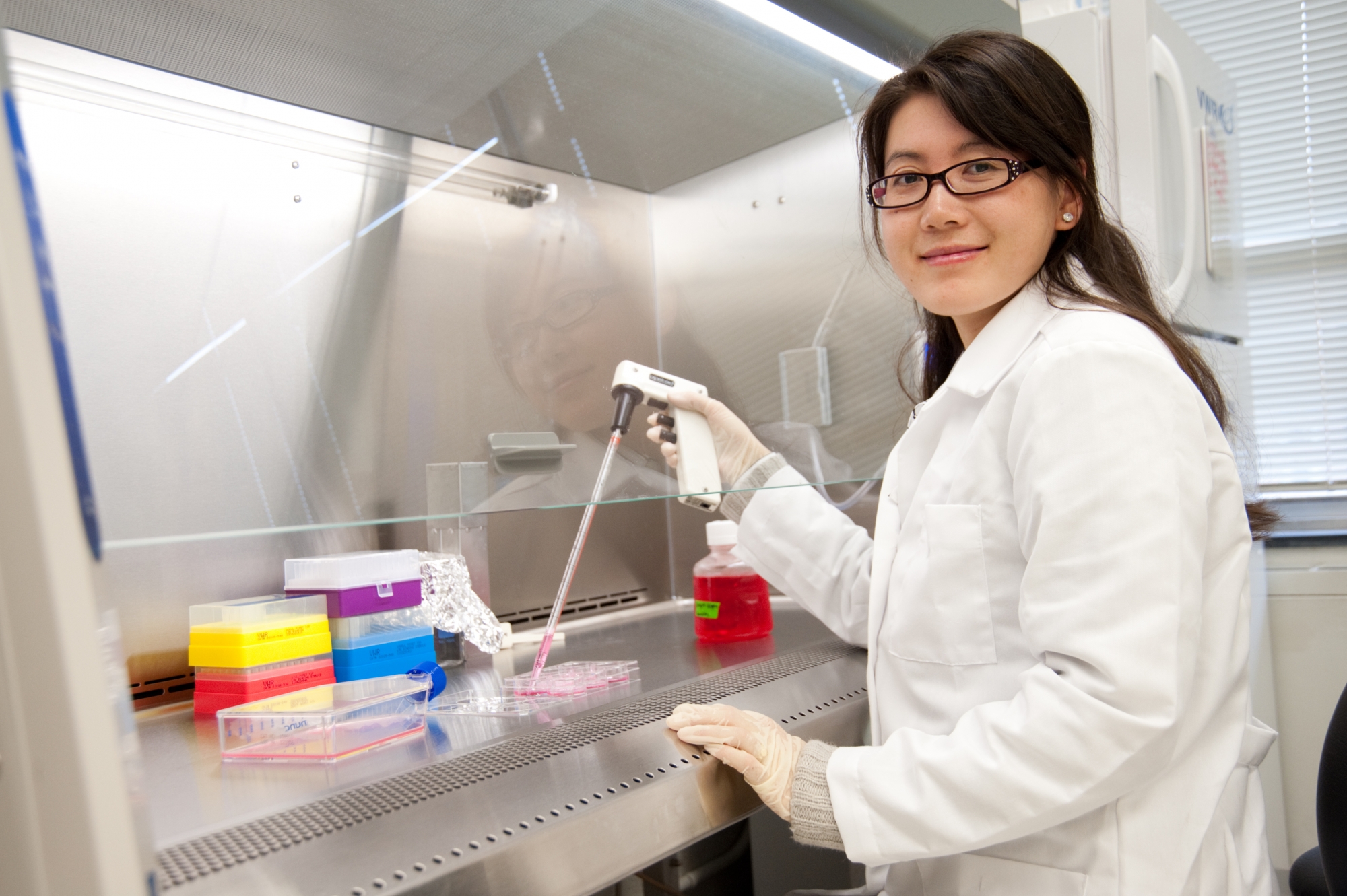
Dr. Lijie “Grace” Zhang
Working with adult stem cells can be likened to working with an extremely bright but undisciplined child: one sees all the potential inside the child but getting him to do what he is supposed to do can be exceedingly difficult. This is one way to think of the task Professor Lijie “Grace” Zhang of the Department of Mechanical and Aerospace Engineering faces.
Adult stem cells are promising progenitor cells for tissue and organ regeneration, because they have the potent ability to differentiate into multiple cell types and tissues in the human body. They can become bone, cartilage, blood vessels, or other tissues. The problem with this great potential—the potential to differentiate into many cell types—is understanding how to control the differentiation to get the type of cells and tissue that one needs.
Zhang, who joined the SEAS faculty last year, has established the Bioengineering Lab in Nanomedicine and Tissue Engineering at SEAS to work on this and other bioengineering challenges. The main objective of her research is to design novel nanostructure tissue and organ substitutes to replace damaged parts in the human body. To do this, she and her doctoral students are working to understand how nano and chemical environments control stem cell differentiation, which they hope will be a significant step toward improving stem cell therapies.
“In the human body, tissue and organs include two parts: the cells and the surrounding materials in which the cells are embedded,” Zhang explains. “The stem cells are very sensitive to the nano-environment in which they live. This environment includes the scaffolds—which are nanometers in dimension—surrounding the cells, and bioactive factors such as hormones that can ‘talk’ to the stem cell to regulate its behavior.”
Zhang and her research partners want to find the optimum conditions to develop stem cells for tissue regeneration—that is, they want to be able to better control the stem cell behavior so that it will change to the specific tissues they are trying to regenerate. “We want to use nano-materials to create a 3-D scaffold that mimics the structure of the cell’s real surrounding materials and later put the stem cell into it and observe its behavior inside the nanostructure scaffold,” she states.
According to Zhang, current research in tissue engineering generally is split between biomaterial-based research and cell-based research. Her research, however, combines the two, which she believes is an approach that very few others are taking. She has already had a good deal of success, receiving five awards last year alone, including a pilot project award from Children’s National Medical Center to design biologically inspired, nano-structured bone substitutes for bone repair and regeneration in children.

